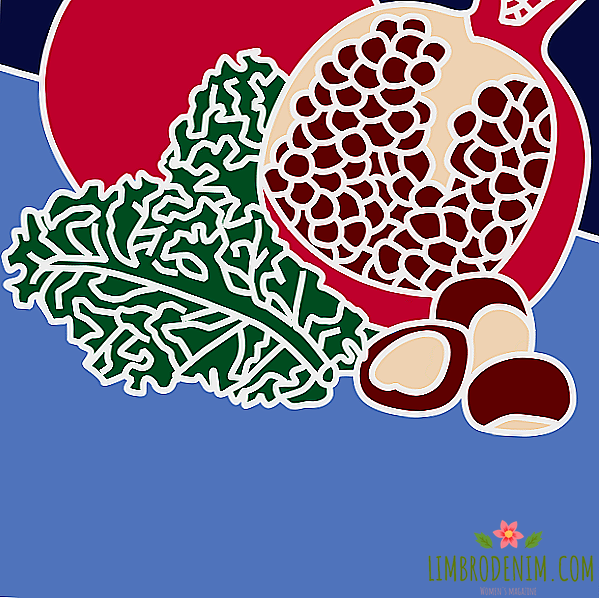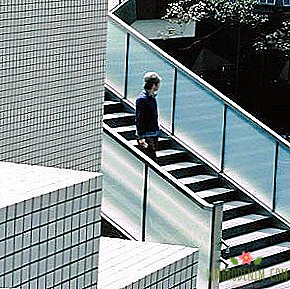How legendary fashion houses of the early 20th century are being revived
closed on different For some reason, legendary brands still hold enormous potential, thanks to which new investors are attracted. Thus, the fashion house of the legendary Paul Poiret, closed in 1930, was recently put up for sale. Until November 28, potential buyers can bid their bids through an online auction organized by the current owner of the brand, the French entrepreneur Arnaud de Lummen, behind whom is the successful revival of the Vionnet house in 2006 and the restart of the old French manufacturer of bags and suitcases Moynat. We tell in more detail about him and about five more houses, the restart of which has become long-awaited or, on the contrary, unexpected.
Paul Poiret

Paul Poiret is a follower and pupil of the founders of couture, the two main fashion designers of the 19th century: Charles Frederick Worth and Jacques Doucet. The first sought to abolish crinolines, offering to replace them with a skirt with a train, and Doucet quoted the art of the East and sewed so-called home tea dresses. Poiret, who began his career in their studio, continued to develop their ideas, and founded his fashion house in 1903.
Poiret freed women from the corset and became an important figure for more liberated femmes libérées. The couturier changed not only the styles of that time, but also the standards of female beauty. With the desire of women to look good in his dresses, the fashion began for a thin sports figure, not bound by a corset - in 1905 he proposed a shirt-cut female dress, and then dresses with oriental motifs. In the wake of the tremendous success of the “Russian Ballet” tour in Europe with the production of Dyagilev “Scheherazade” Poiret, a big fan of theatrical art, began to introduce Oriental motifs.

Bright colors, elegant patterns, harem pants and tunics embroidered with gold threads, turbans decorated with pearls and expensive feathers, were enthusiastically welcomed by European women. Among the clients of the famous master was Isadora Duncan, who called him none other than a genius. Another Poiret invention is a narrow “lame skirt” (the so-called hobble skirt), reminiscent of a mermaid's tail, which allowed only small steps to move around and caused a stir among customers. They wore it with a wide-brimmed hat with feathers. Paul Poiret is also the first fashion designer who released his own brand of perfumes in 1911, naming them after his eldest daughter Rozin. In addition, Poiret was a marketer: he invented the design of the bottle, packaging and advertising.
After the First World War, interest in the works of Poiret faded away. His models, which symbolized the eternal celebration, become irrelevant for the post-war period, and the Poiret brand does not compete with the new fashion houses, including Chanel. Resolutely unwilling to create simple clothes, Poiret was forced to close his house in 1930. Poiret spent the last days in poverty and died in 1944. Interest in the works of Poiret was revived in the 50-60s with the filing of his widow and muses Denise Poiret - the designer’s vintage items began to rise in price, exhibitions of his work gathered crowds of admirers, and collectors bought everything related to his name. But it will be possible to speak about the real revival of the brand only after the auction at the end of November 2014. According to its current owner, Arnaud de Lummen, who calls the legendary closed brands "sleeping beauties", Poiret is so famous around the world that it can attract investors even from markets that are still unknown to us.
Jean patou

The history of the fashion house Jean Patou is full of ups and downs. Founded in 1912, the fashion house was forced to interrupt its work in 1914 due to the outbreak of the First World War. On the eve of the hostilities, Patou managed to sell the latest collection to almost all of the American buyer and go to the front. Once again, the house of Jean Patou was opened in 1919. As history has shown, the most significant changes in fashion (as well as in other spheres) occur precisely after wars: covered with jubilation, people crave for big changes. And the personification of such changes was Jean Patou.
That thing Patu became the basis of the wardrobe of girls flappers of the 20s and helped to the emergence of androgynous silhouettes. Shortening his habitual skirts to the floor, he was one of the first to flaunt women's legs and created not only beautiful, but also comfortable clothes, including sportswear: along with Coco Chanel and Elsa Schiaparelli, Patou worked on the creation of women's things to play tennis. It was in his pleated skirt that the French athlete and champion Suzanne Lenglen won gold in Antwerp in 1920. Patou, as one of the pioneers of sportswear, believed that the innovative style is an athletic silhouette.

Patou’s innovative ideas were very popular among liberal Americans, which undermined the stability of his business after the collapse of Wall Street in 1929. His other innovative idea helped him survive the economic crisis of Patou, the perfumery line that remains afloat many decades later: his most famous fragrance, Joy, is still produced. Mark Boan, Karl Lagerfeld and Jean-Paul Gautier tried to restore the former greatness to clothes under the brand of Jean Patou in different years.
Christian Lacroix, who headed the house of Jean Patou in 1981, returned to the company fame and high incomes. But this take-off was followed by a rapid fall, and in 1987, after the departure of Christian Lacroix, who decided to establish his own brand, the house of Jean Patou was closed. 25 years after the closure, the brand was destined to be reborn again - the current vice-president of the house, Bruno Georges Kottar, resumed its resuscitation. However, it is still difficult to predict how successful the brand’s activities will be, because, as you know, historical heritage is not a guarantee of success.
Vionnet

The history of the house Vionnet begins in 1912. The founder of the brand, Frenchwoman Madeleine Vionne, made a revolution in fashion with her unique oblique cut of dresses, thanks to which the fabric lay in wavy folds, and things perfectly repeated the curves of the female body. Before opening the atelier, she, like Poiret, gained experience in the atelier of Jacques Doucet. Unable to draw, Vionne created dresses that she built with the precision of an architectural drawing, draping a new fabric directly on the mannequin each time: the paramount principle of the couturier was to create clothes on the figure.
She was inspired by the antiquity and ballet costumes of Isadora Duncan, she wanted to abolish the corsets and argued that the concept of liberating the female body belonged to her, and not to Paul Poiret. Although, most likely, the idea was just in the air: many designers ascribed it to themselves. In the 1920s, references to East and Cubism appear in her works; she quotes kimono and creates geometric dresses of three main forms: a rectangle, a square and a circle. Largely due to the fact that Vionne was one of the first to start hiring fashion models, the profession of models became prestigious. Defiled models without corsets, barefoot or in sandals. At the time of the First World War, the business was curtailed and resumed on a new scale in 1922. Following the Parisian atelier on the Avenue Montaigne Vionne, she opened her own store in New York on Fifth Avenue, where the ready-made dresses for the clients were customized. In 1929 the number of employees at home reached 1,200 people.

Since the beginning of World War II in 1939, the Vionnet fashion house was closed. After 49 years, the company was bought by businessman Guy de Lummen, and in 2006 his son Arnaud de Lummen attempted to revive the brand’s former greatness. To work on the brand attracted the Greek designer Sophia Kokosalaki, which is known for its drapery. Then Marc Odibe took her place with experience in Prada and Hermès. However, art director Marc Odibe, hired for this purpose, was unable to achieve the task. The next designer of the brand, Rodolfo Palliunga, who now heads the house of Jil Sander, did not cope with it either.
In 2009, the fashion house of the de Lummen family was acquired by the heir to the Italian dynasty, Matteo Marzotto, who had already restarted Valentino in the early 2000s. In 2012, the brand bought out Goga Ashkenazi and personally occupied the designer’s chair, inviting Hussein Chalayan to the couture line, who is simultaneously working on his own brand. Chalayan’s vision is much like Madeleine Vyonne’s style. “There are things that you must first create and then sketch,” says Chalayan, who uses complex layered cuts and numerous draperies in his models.
Schiaparelli

The works of the founder of Schiaparelli and the creator of the concept of commercial ready-made clothes, the Italian Elsa Schiaparelli, can be called reformative. Rival Coco Chanel changed her attitude to knitwear - her black knitted pullover with geometric patterns (from bow to skull) revolutionized fashion in 1927 and became a bestseller in America, where Elsa subsequently opened many boutiques. Along with Jean Patou and Coco Chanel, she developed the idea of sportswear and ready-to-wear in fashion, showing tennis dresses, skirts, swimwear and skiing outfits in her boutique Pour le Sport in the late 20s. In addition, she was one of the first to use a zipper for her dresses. By the 1930s, more than two thousand employees worked on it.

Elsa is best known as a surrealist designer, whose extravagant ideas are still used today. Her passion for surrealism and dadaism in the 30s was reflected in her buttons in the form of candy and peanuts, in her bags in the form of music boxes or a silk dress with lobsters painted by Salvador Dali. Cooperation with Dali was not limited to this: he painted advertisements for lipsticks and perfumes for her, and Elsa designed things according to his sketches — for example, a boot hat. For the post-war requirements, it, like many designers of that time, was not easy to adapt. And although the perfume line founded by her in 1928 was a success and helped to develop the house for a while, in 1954 the Schiaparelli fashion house was closed.
In 2007, the brand was bought by Tod’s owner Diego Della Valle, but the Schiaparelli comeback was postponed until 2014, although one of the attempts to revive Schiaparelli was in the account of Christian Lacroix. As a result, only last January at the High Fashion Week in Paris, the new creative director of the house Marco Zanini presented the first couture collection of the revived house spring-summer 2014. Marco Zanini skillfully works with the archives of the house (monkey fur came into fashion thanks to Schiaparelli, and with him Zanini works) and already in two collections he proved that surrealism and theatricality are exactly what the modern fashion lacks. At least the sympathy of Tilda Swinton has already earned an updated fashion house.
Charles James

Despite his British origins, Charles James is known as the first American couturier. Starting a career with a small hat shop in 1926, Charles James earned the title of one of the greatest designers of all time. The Great Depression played a significant role in this. After the crisis, Wall Street, many Parisian couturiers in America imposed 90 percent duty and they had to wind down their business, and their place was taken by local designers. Among them was Charles James, and a number of iconic couturiers of the era: Main Boher, Elizabeth Hawse and Muriel King.
Charles was not just a fashion designer or sculptor, but an architect. For example, a quilted jacket, created by a designer in the mid-30s, in addition to an evening suit and called “soft sculpture” by Salvador Dali, became the ancestor of modern quilted jackets, even present in the wardrobe of people far from fashion. In addition to the quilted jackets business cards James became a ball gown "Four Leaf Clover", which was almost an engineering structure. The dress consisted of four layers: a petticoat of taffeta, a tight petticoat, a petticoat wedges and a top dress. It was difficult to move in it, but it looked breathtakingly.

The discomfort of women did not stop the designer who meticulously created pieces of cloth made of art: his ball gowns could weigh up to 8 kg. Charles James was to some extent a fanatic and a perfectionist: he could remake the same model several times, adjusting every detail with mathematical precision, working on the perfect cut of the sleeves for a long time and spending a lot of money on it. In the 1950s, Charles James’s career declined, and his reluctance to accept changes in fashion was the reason. James could not come to terms with the advent of mass production and abandon the complex cut for the sake of cheaper models. But debts and unpaid taxes forced him to completely leave the fashion world in 1958.
In 2014, the world again spoke of the brand Charles James. After the ball, organized by the Met Gala Costume Institute in honor of the legendary fashion designer, it was announced that the American film producer and co-founder of Miramax Films Harvey Weinstein would take over the revival of the brand - he signed an agreement with Charles James's children to buy a license with the possibility of subsequent acquisition of the brand. The return of the brand is planned under the management of creative consultants: Marchesa co-founder and designer Georgina Chapman and her brother, President Marchesa, Edward Chapman.
IRFE

The IRFE brand was founded in Paris in 1924 by Russian emigrants: the niece of Nicholas II Irina and her husband Felix Yusupov. The folded initial letters of their names gave the name to an aristocratic house in every sense of the word. Once the clients of Parisian fashion houses, the Yusupov couple knew the secrets of high fashion, and their friends and relatives took part in creating the collection. Despite the classic design, their outfits in Paris were demonstrated by androgynous models à la garçon, and the couturier had in mind the development of sportswear. In 1926, IRFE introduced its own perfume line of four fragrances: Blonde for blondes, Brunette for brunettes, Titiane for brown-haired women and Gray Silver for women of "elegant age." Unlike other houses, IRFE directly named hair color and paid attention to middle-aged women, dedicating one of the fragrances to Empress Maria Feodorovna.

The economic crisis of the late twenties affected many sectors of the world economy, and in 1931 the IRFE, after many other companies, had to declare bankruptcy and close all of its branches. However, the perfume line of the brand lasted until the early 60s, and one of the dresses at home fell into the Institute of Costume of the Metropolitan Museum of Art in New York.
The return of the brand after a 90-year hiatus was to some extent due to fashion historian Alexander Vasilyev. Olga Sorokina learned about the house from his book Beauty in Exile, and after meeting her granddaughter Yusupov, Xenia Sheremeteva-Sfiri, she set about reviving the legendary fashion house. Last year, to the 400th anniversary of the Romanovs' house, the renewed house IRFE made its first step - its new collection was shown at the Paris Fashion Week. Today, the creative team at home is trying not only to preserve, but also to modernize the IRFE collections.
Photo:The Metropolitan Museum of Art, IRFE, Schiaparelli, Wikimedia Commons, Vionnet




